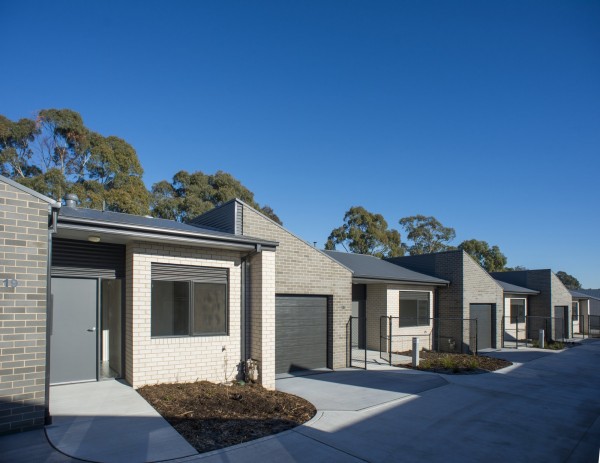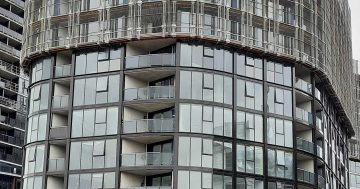
Public housing is being renewed, but there’s a shortfall of about 3,000 social housing properties in the ACT. Photo: ACT Public Housing Renewal Taskforce.
In my short life, I haven’t experienced anything as significant and scary as the pandemic.
The idea is terrifying that there is a virus that could strike at any time and that the factors that could lead to either my protection from it or my infection are largely beyond my control (beyond vaccination, which I leapt at).
For other Australians – those from older generations or less stable home countries – I imagine it’s not a new feeling. War must be the single most frightening experience that renders people helpless in the face of violence and displacement.
But in a first-world country like Australia, especially living in the bubble of affluence that is Canberra, I’ve been sheltered from most bad things, with little of substance to complain about (I’m sure some readers will wholeheartedly agree on that last point).
As we try to find a way out of this current lockdown, many in Canberra are facing situations more dire than just the virus alone. The housing crisis for supported and affordable accommodation is dire in our city, with an estimated shortfall of 3,000 social housing properties.
When we talk about the housing crisis, it’s often with a sense of helplessness that echoes some of the rhetoric around COVID: there’s only so much decision-makers can do, rental affordability is in the hands of the market, it’s just a bad time for property prices if you’re buying or renting, and a great time to be on the other side of the coin.
But at the crux of the matter – it isn’t out of our hands, is it?
There are meaningful and tangible ways that we could address housing affordability to make the market more accessible for many and to provide safe accommodation for those who are the most vulnerable. Experts have been calling for a national housing strategy, for a drastic increase in social housing stock, for rent relief measures and meaningful parameters set on investment properties to address inequality for years.
There are even more innovative approaches that have been modelled by countries like Singapore where housing isn’t framed as a financial opportunity, but a necessary social asset for people’s wellbeing and citizens can access government-subsidised housing on long-term leases. Importantly, there’s not the stigma associated with government housing as there is in Australia.
The framing of the housing crisis as an unfortunate issue that government can only do so much about, and is ultimately down to an individual’s earning power, is a convenient political framework that allows governments to pander to the rich and shrug their shoulders at everyone else.
In the depths of COVID, I’ve been very conscious of those who are renting or insecure in their tenancies. One friend was evicted a month before lockdown and spent weeks attending crowded open homes, unable to match the rent bids that other applicants were putting forward. He eventually found a way to rent through a friend of a friend privately, putting him in a relatively vulnerable situation.
And he’s one of the lucky ones – for those unable to fund any sort of market rent, the situation is incredibly dire.
We talk a lot about the availability of land, the need for more housing options, but by and large, this is in the context of creating options for the middle class. If anything, it provides a pathway for people like me to jump into the market and eventually move into the class above ours until we’re landlords with multiple properties, hoarding the market and reaping the benefits.
I would rather forgo the financial advantage if it meant housing was more equitable and accessible for everyone.
Let’s stop pretending there is nothing we can do to address inequality when a roof over our heads is surely the single most basic human need after food, water and oxygen.




















